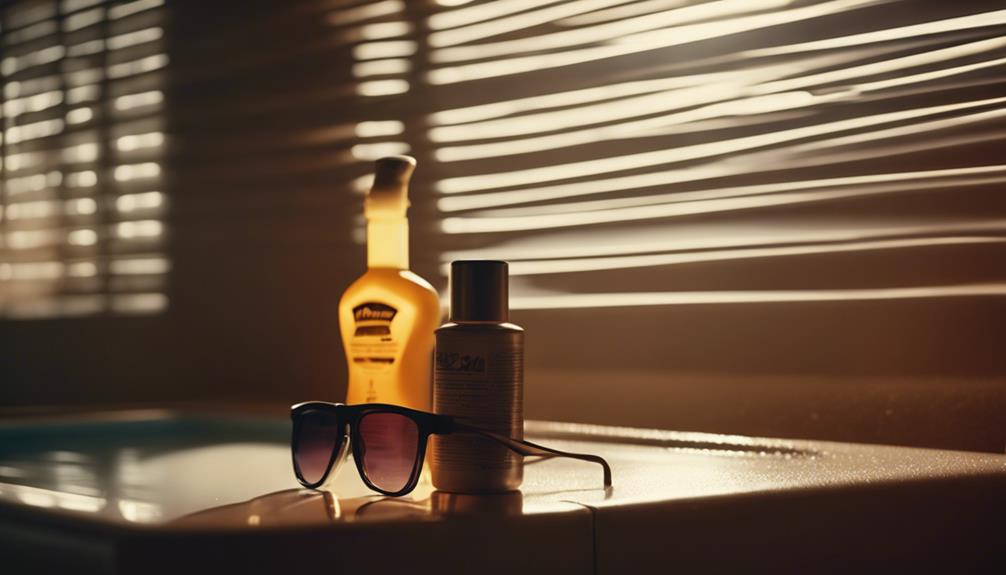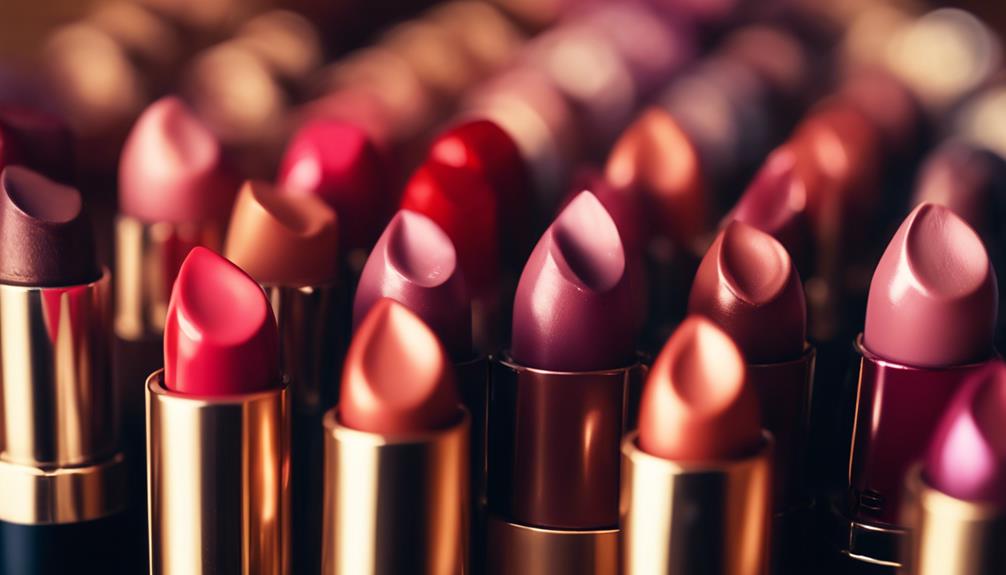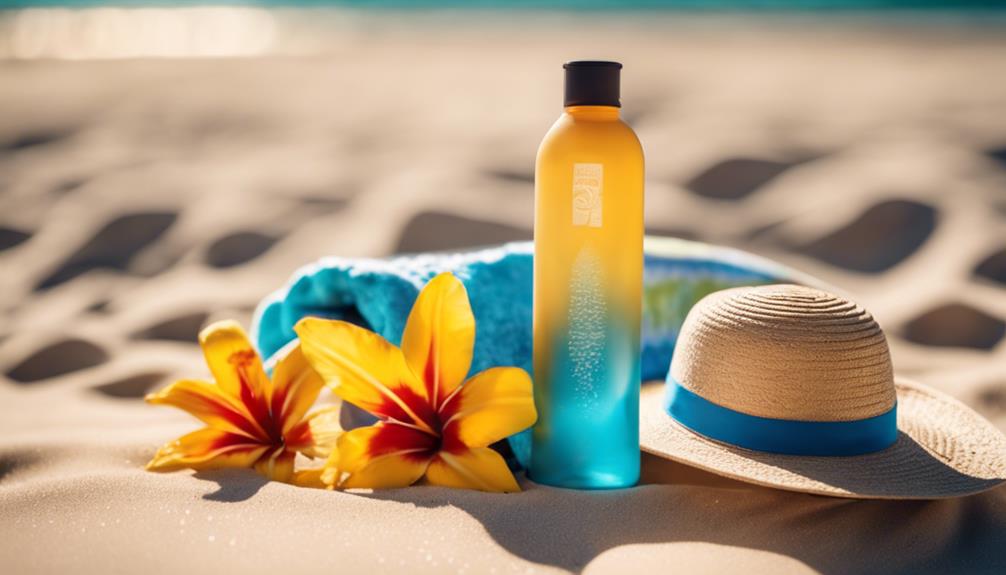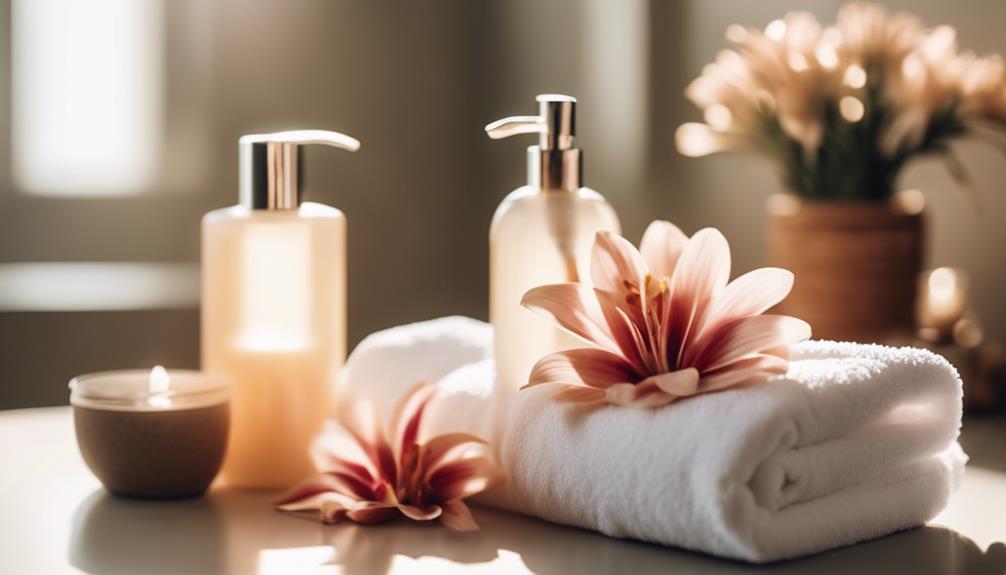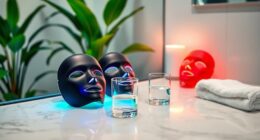To guarantee skin safety while tanning, start by exfoliating and moisturizing your skin to create an even base. Always check the UV index before tanning, and know your skin type to limit exposure accordingly. When using tanning beds, opt for those with maximum UVA and minimal UVB rays, and don't forget eye protection with goggles. Use tanning lotions to hydrate your skin and avoid misconceptions like relying on a base tan for protection. Hydration is key both before and after your session. For more tips on achieving that glow safely, you might find the following insights helpful.
Key Takeaways
- Always exfoliate and moisturize before tanning to ensure an even and healthy tan while avoiding oil-based products.
- Check the UV index and know your skin type limits to prevent overexposure and sunburn.
- Use protective goggles during tanning sessions to shield your eyes from harmful UV rays.
- Opt for tanning beds with maximum UVA and minimal UVB exposure for safer tanning experiences.
Tanning Preparation Essentials
To achieve a flawless tan, it's vital to prepare your skin properly before tanning sessions.
Start by exfoliating your skin to remove dead cells, guaranteeing an even tan.
Next, apply a hydrating moisturizer, but steer clear of oil-based products that can interfere with tanning results.
Supporting your melanocytes is essential; consider using products that boost melanin production during tanning.
If you're using a tanning bed, keep in mind that it can help synthesize vitamin D, contributing to skin health.
Finally, follow a prep checklist to make sure you haven't missed any important steps.
Proper preparation sets the foundation for a beautiful, long-lasting tan while minimizing the risk of uneven coloration.
Safe UV Exposure Guidelines
Understanding safe UV exposure guidelines is essential for protecting your skin while achieving a healthy tan.
First, check the UV index before you tan; this helps you gauge the risk of overexposure.
Know your skin type and its limits—fair skin burns quicker than darker tones. Limit your tanning sessions based on those limits, and avoid exceeding recommended times.
Use tanning lotions to hydrate your skin and provide some protection.
During your session, stay alert for signs of overexposure, such as redness or discomfort. If you experience dizziness or nausea, stop immediately and seek shade.
Always consult a skincare professional for personalized advice to guarantee you tan safely and effectively while minimizing potential damage to your skin.
Selecting the Right Tanning Bed
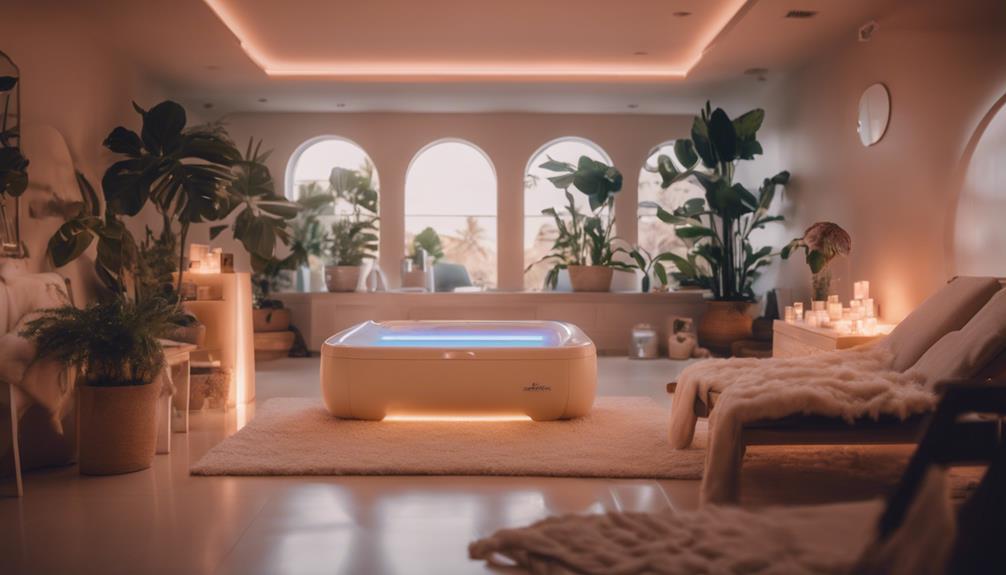
Choosing the right tanning bed can greatly impact your tanning experience and results, guaranteeing you achieve a beautiful glow while minimizing risks.
Look for tanning beds that offer maximum UVA and minimal UVB exposure; this balance helps protect your skin while promoting a deeper tan. Beds with after-bronzers are ideal for an even finish, while options featuring side and shoulder tanners ensure thorough coverage.
Always prioritize eye protection—goggles are essential to shield your vision.
Additionally, consider your skin type and tanning goals when selecting a bed. Consult with salon professionals for personalized recommendations, guaranteeing you make informed choices that align with your skin's needs and enhance your tanning experience.
Managing Tanning Sessions Effectively
Maximize your tanning results by carefully managing session durations and frequency based on your skin type.
Understanding your skin's needs is essential for achieving a beautiful, safe tan. Here are some tips to help you manage your tanning sessions effectively:
- Know your skin type: Identify your sensitivity and adjust exposure accordingly.
- Limit session times: Stick to recommended durations to avoid overexposure.
- Space out sessions: Allow your skin time to recover between visits.
- Use a timer: Keep track of your tanning duration to prevent going over.
Importance of Eye Protection

Protecting your eyes during tanning sessions is essential, as UV rays can lead to long-term damage and discomfort.
Using protective goggles is a must; they shield your eyes from harmful rays and prevent conditions like cataracts or macular degeneration. Remember, your eyelids are too thin to effectively block UV exposure, so goggles are non-negotiable.
You'll also want to avoid wearing contact lenses during tanning, as they can react unfavorably to UV light.
Additionally, apply SPF lip balm to keep your lips safe from burning.
By prioritizing eye protection, you not only safeguard your vision but also enhance your overall tanning experience.
Don't overlook this vital step for healthy tanning sessions!
Protective Wear for Tanning
When you're tanning, wearing the right protective gear is essential for keeping your skin safe and enhancing your results.
Using proper protective wear not only helps prevent damage but also maximizes your tanning experience.
Here are some key items to contemplate:
- Tanning Lotions: Hydrate your skin and boost bronzing effects.
- Bronzers: Get an immediate color boost and enhance melanin production.
- Intensifiers: Achieve a deeper, lasting tan with specialized products.
- Moisturizers: Maintain hydration and prolong your tan's longevity.
Common Tanning Misconceptions

Many people hold misconceptions about tanning that can lead to unsafe practices and ineffective results.
For instance, many believe that a base tan protects against sunburn, but this isn't true; it offers minimal protection.
Others think indoor tanning is completely safe, but it still exposes your skin to harmful UV rays.
There's also a common belief that tanning lotions are unnecessary, yet they help hydrate your skin and enhance your tan.
Another misconception is that darker skin tones don't need sun protection, which is false; everyone should use SPF.
Ultimately, some think tanning beds are better than sun exposure, but both can increase the risk of skin damage.
It's crucial to debunk these myths for safer tanning practices.
Resources for Safe Tanning Practices
How can you guarantee a safe tanning experience? By utilizing the right resources and practices, you can protect your skin while achieving that desired glow. Here are some helpful tips:
Consult a Professional: Talk to skincare specialists for personalized advice.
Use a UV Index App: Monitor real-time UV exposure levels.
Read Product Labels: Choose safe tanning lotions without harmful chemicals.
Stay Hydrated: Drink plenty of water to keep your skin healthy.
Follow a Tanning Schedule: Stick to recommended times based on your skin type.
Frequently Asked Questions
Can I Tan if I Have Sensitive Skin?
If you have sensitive skin, you can still tan, but proceed with caution. Start with short sessions, choose gentle products, and always listen to your skin's reactions to avoid irritation or discomfort.
How Often Should I Exfoliate Between Tanning Sessions?
If you've just tanned, consider exfoliating every 3-5 days. This keeps your skin smooth and your tan even. For example, after your first session, gentle exfoliation helps maintain that golden glow without patchiness.
Are Self-Tanners Safe to Use Before Tanning?
Self-tanners are generally safe to use before tanning sessions. They can provide a base color and help even out your skin tone. Just make certain your skin is well-prepped and moisturized for the best results.
What Should I Do if I Get Sunburned From Tanning?
If you find yourself sunburned after tanning, don't panic. Start by cooling the skin with aloe vera gel, hydrate well, and avoid further sun exposure. Your skin's healing journey begins with these essential steps.
Can I Use Regular Lotion After Tanning?
You shouldn't use regular lotion after tanning, as it may contain harsh chemicals. Instead, opt for a hydrating lotion specifically formulated for post-tan care to soothe and nourish your skin effectively.
Conclusion
By following these smart tanning tips, you'll not only achieve a sun-kissed glow but also protect your skin like a superhero defending against harmful rays.
Remember, preparation and post-tan care are just as important as the tanning process itself.
Don't let common misconceptions steer you wrong; prioritize your skin's health, and you'll shine brighter than a thousand suns!
With the right knowledge and strategies, you can confidently embrace your glow while keeping your skin safe and radiant.

